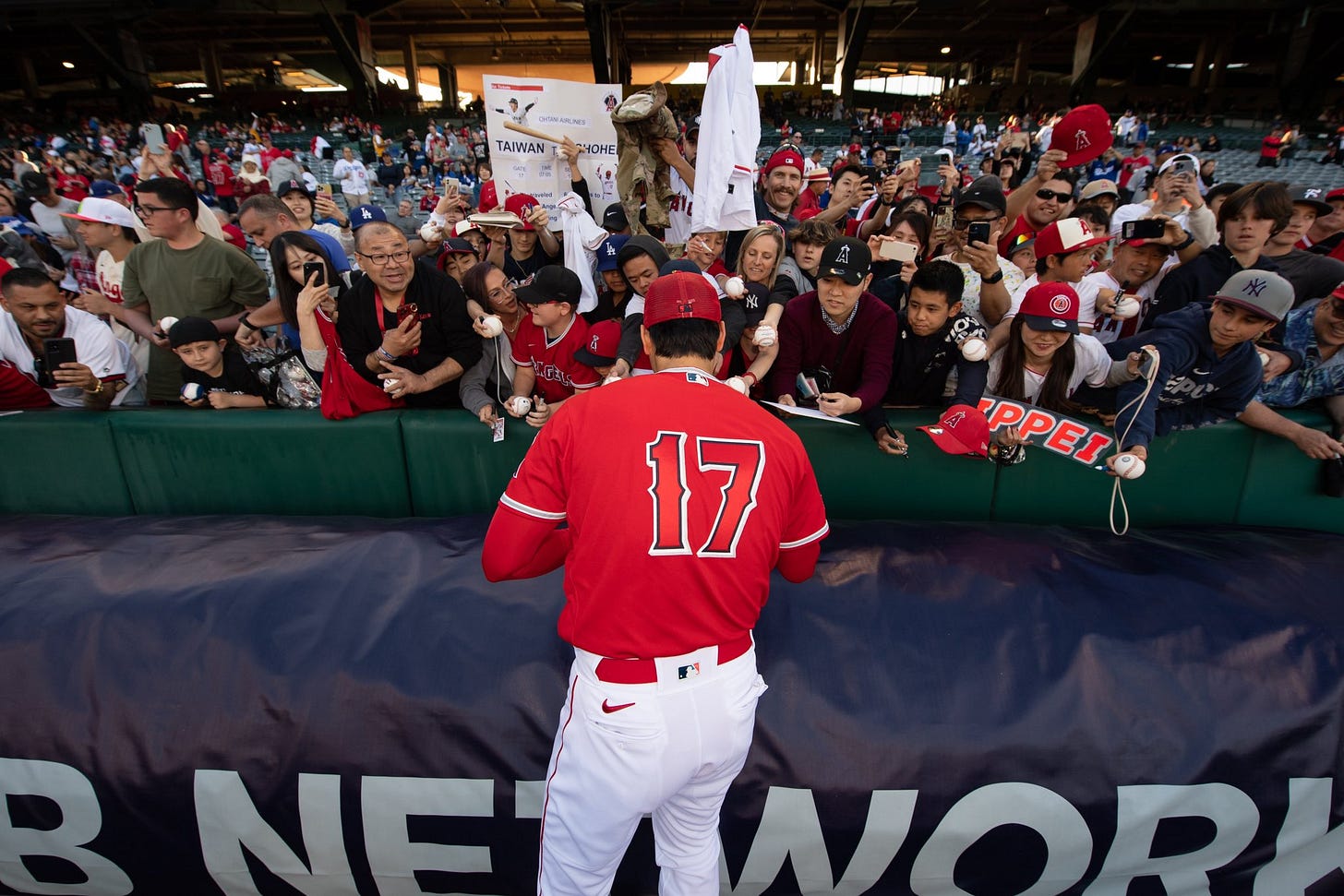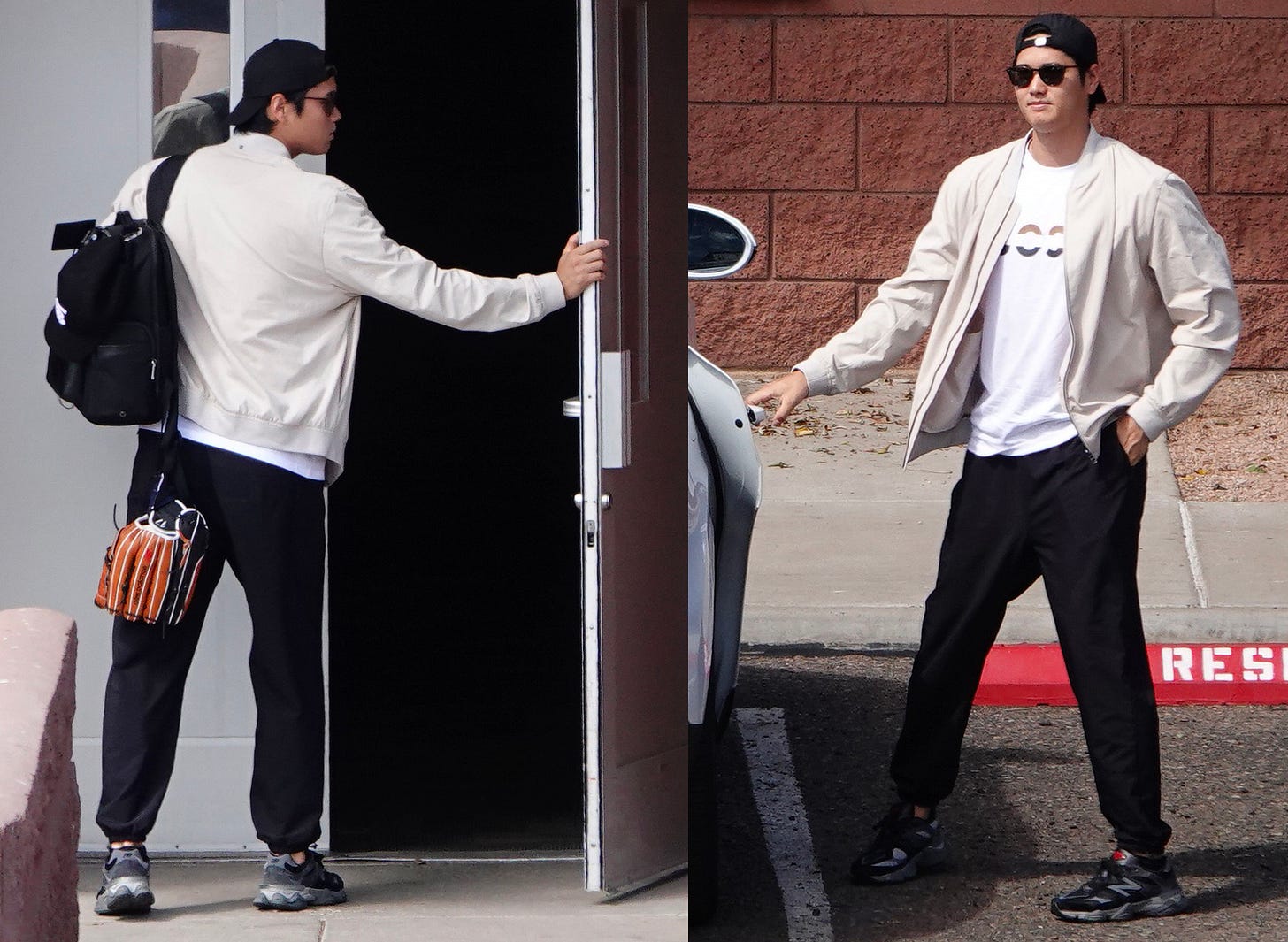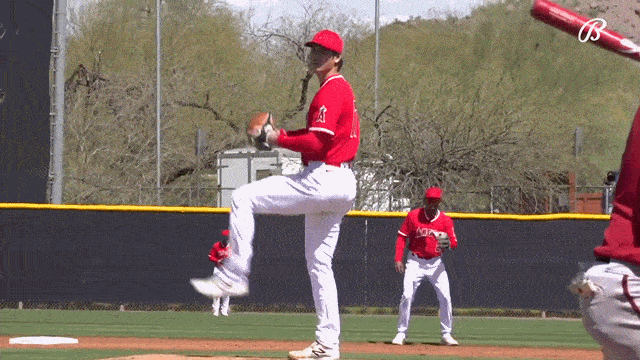Back To MLB, With New Rules
The MLB regular season kicks off this week, but there are new adjustments Ohtani will have to make for the changes to the sport.
A week after the World Baseball Classic finale, where Japan won it all, Shohei Ohtani is back with the Angels and getting ready to kick off the MLB regular season.
Farewell, ‘23 WBC
Coming off Ohtani’s game-winning and championship-winning strikeout against Mike Trout to close out the WBC Finals, it still almost doesn’t feel real that we got to witness such a historic and unique matchup moment on that big stage.
Phil Nevin, Angels manager, said he got a lot of texts about who he was rooting for with Ohtani vs. Trout. “I was feeling that this is the greatest game in the world. There's no other sport, no other situation that can create that kind of drama and atmosphere, one-on-one, the two best players in the world. It's what makes our game great."
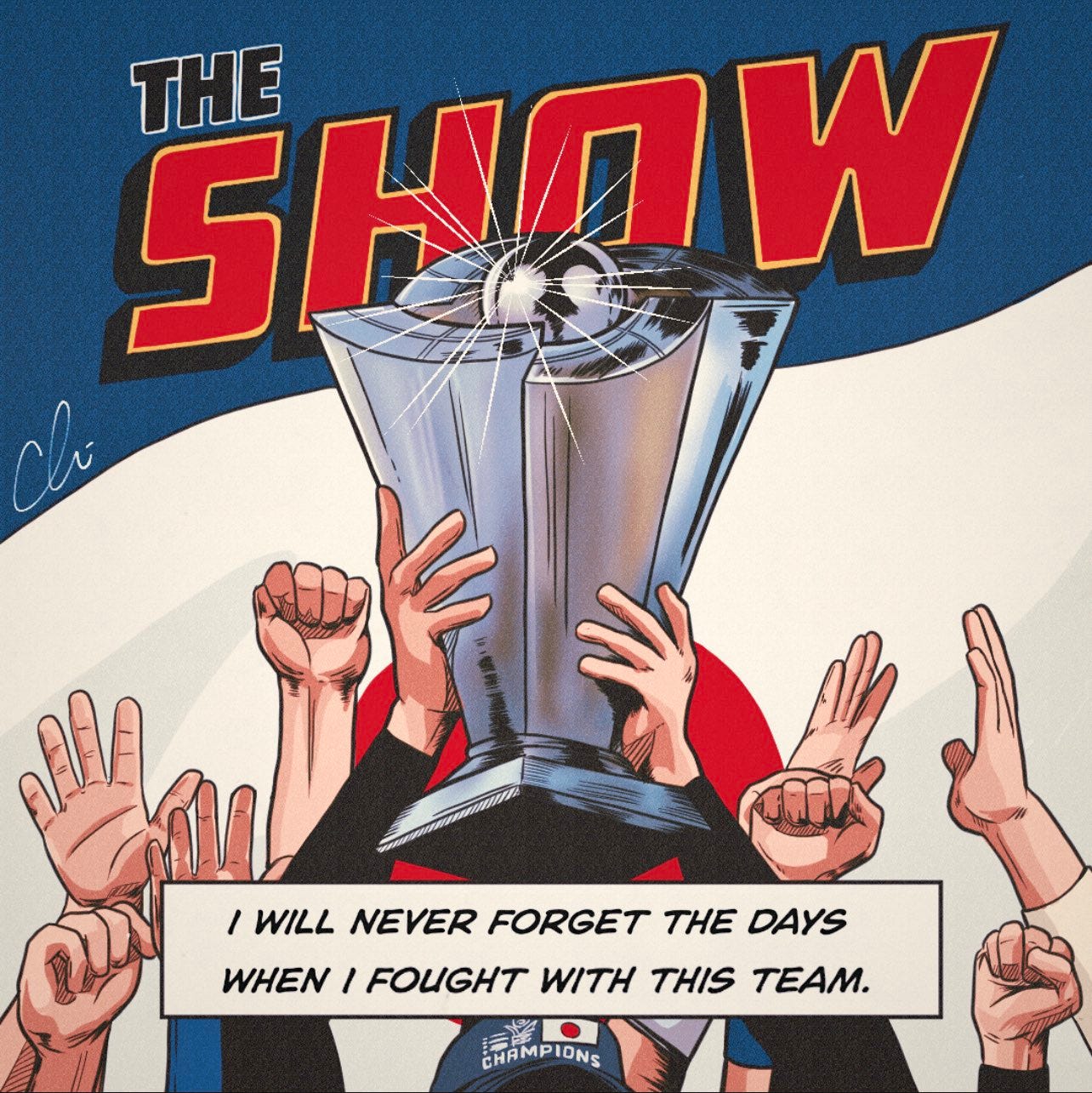
Before we get into the upcoming season, a few final WBC tidbits:
Someone unearthed Ohtani’s goal list from high school, where he said that at age 27 he wanted to be a member of the Japan WBC team and win an MVP… sorry Shohei, you’re a year too late. 😉
Japan’s manager, Hideki Kuriyama, retired directly after winning it all. What a way to go out. He has been an important figure in Ohtani’s life.
Ohtani’s hat from the championship game is headed to Cooperstown. Meanwhile, the Japanese Baseball Hall of Fame hosted the WBC trophy – where fans waited in long lines to get a glimpse.
New bestie Lars Nootbaar says he has a handshake agreement with Ohtani to play for the 2026 WBC team together again. Noot was even gifted a nice watch by Ohtani, but there’s one condition: “He told me that if I didn’t play for Japan next time or represent another country instead, I’ll have to give it back.”
Harry Styles also congratulated Japan on the WBC title at his Tokyo show.
Back to Spring Training
No championship parade for Ohtani, unfortunately, as he headed back to Arizona for the rest of Spring Training right after the WBC Finals in Miami ended. However, it might have been for the best as Ohtani said he was feeling the jet lag from all the travel, which he was catching up on his beauty sleep. Nonetheless, he pulled up to camp looking sharp and as cool as ever.
Before the tournament, Ohtani had made one pitching start for the Angels in Spring Training before he had to leave. On Friday (3/24), Ohtani threw 4.2 IP in a minor league high-A game, striking out 8 batters on 81 pitches.
"The game today was to get up to my pitch count, get used to the pitch clock again and using the PitchCom," Ohtani said through Ippei. "I felt like with all the pitches and all the intensity of the Classic, I was already ready for Opening Day. Today was just fine-tuning stuff, all the off-speed pitches and the PitchCom and pitch clock.”
After that Friday game, the Angels played a mini Freeway Series against the Dodgers that wrapped up Spring Training, where Ohtani hit as the DH.
Next Up: Ohtani’s 6th MLB Season
It’s time for Major League Baseball, and for Ohtani to kick off his final year (under his current contract) with the Los Angeles Angels – reunited with Trout, Sandoval, Fletcher, and the rest of his teammates.
Mike Trout told reporters that right after the WBC was over, he texted Phil Nevin and told him, “I needed this. I needed to play in this atmosphere. I needed to experience it and be in the moment.” It made him even hungrier to get to the playoffs this year.
The Angels added some depth this offseason, but will it be enough to make a dent in the AL West against the reigning Houston Astros? Or against the Seattle Mariners? Even the Texas Rangers added Jacob deGrom, amongst others, this offseason.
Well, if Ohtani has anything to say about it, he will do his best to get them a wild card spot and a foot in the door. Or, ya know, there’s a chance he might get traded at the deadline if they Angels aren’t in contention to make it.
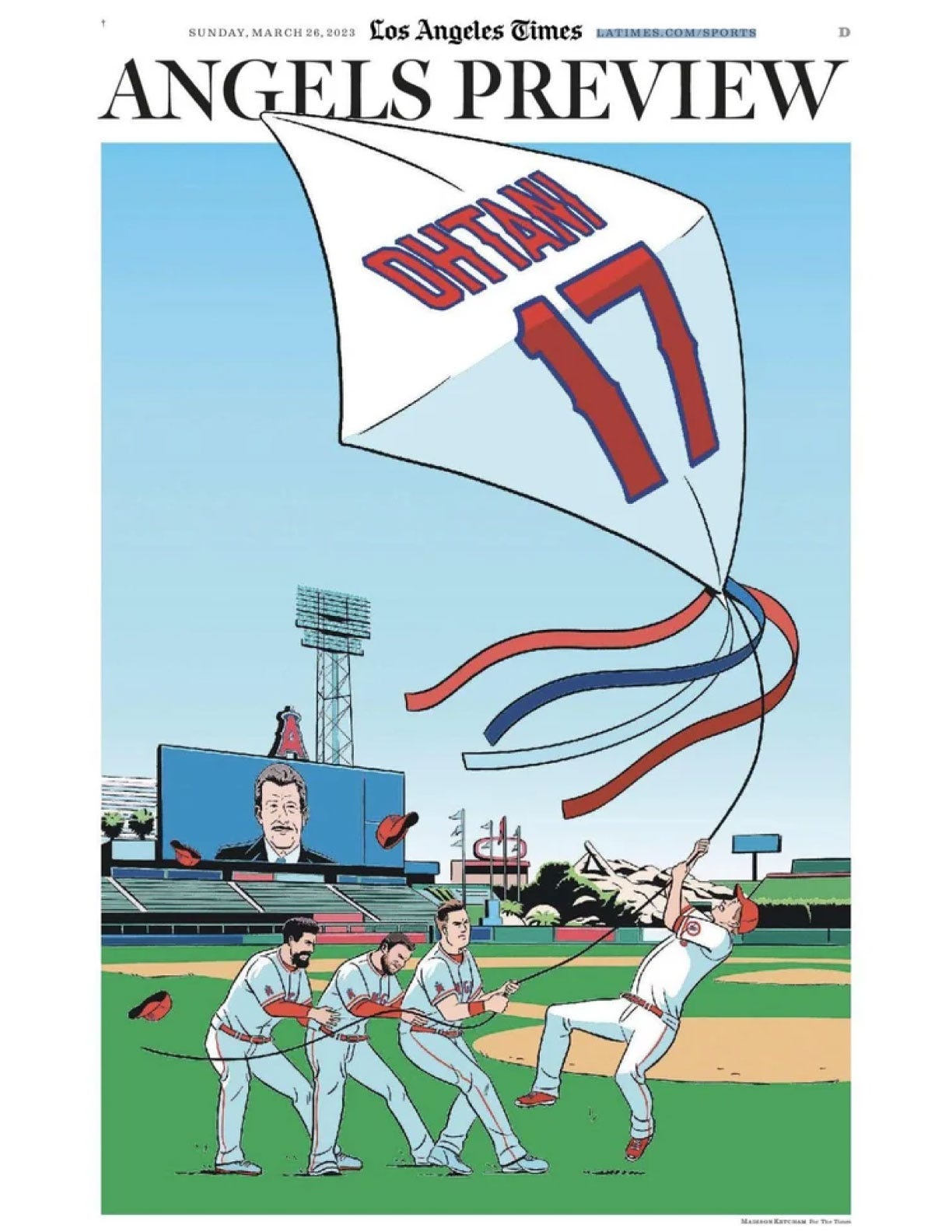
Let’s start off simple: Opening Day, the first game of the season, will bring Ohtani to the mound on Thursday (3/30) at 10pm ET / 7pm PT. He’ll pitch against the Oakland A’s, who he should have no trouble with. What will be more interesting to watch is how Ohtani does with the new rules…
How Do The New MLB Rules Impact Ohtani?
This season, MLB is trying to make a more entertaining game for the fans. Essentially, making it faster. Games have been averaging around 3 hours, and with the pitch clock last year in the minor leagues – where it was first tested – the games were about half an hour shorter. They’re hoping that translates to the majors. (None of these were implemented in the WBC this year)
What is Pitch Clock?
Pitchers will have 15 seconds to begin their motion with the bases empty – or 20 seconds with a runner on. If not, a ball is called. (Batters will also get a strike called if they’re not in the box by the eight-second mark)
“It’s the same rule for everyone,” Ohtani said at the beginning of Spring Training. “Everyone's going to adjust. So far, so good. I feel like I'm being a little bit rushed, but as long as I keep on getting games under my belt, I’ll be fine.”
Last year, Ohtani averaged 21.7 seconds when the bases were empty and 26.9 seconds when a runner was on. Those numbers are a little deceptive, however, and there’s already a solution. A big part of what took longer is that Ohtani would often say no to the pitches that the catcher was calling (what can we say, the man knows what he wants). But now, Ohtani will be able to use a special device – PitchCom – to call the pitches himself to the catcher. This should help speed up the process.
What is PitchCom?
PitchCom is a little gadget that lets pitchers and catchers more easily send signals to each other. It comes with a dozen buttons that are then tied to different pitch options and locations on the plate. The pitcher can hear the command through a speaker put into in their cap (which can also be translated across languages).
Ohtani used the PitchCom system briefly earlier in Spring Training, and again after he returned from the WBC. “I took longer last year because I was shaking off a lot of pitches,” Ohtani said. “I wanted to make that one pitch that I had in mind. This time around I’ve been calling my own pitches. That should help with the pitch clock.”
The PitchCom device for Ohtani was somewhere around his left arm, but it was unclear where exactly – and he wouldn’t give away the secret. “It’s a good sign that you guys don’t know,” Ohtani told reporters, which was met with laughs.
What is the shift ban?
Something that will impact Ohtani both on the mound and at the plate is the ban of “the shift.” Instead of putting your team’s infielders wherever you want, all four of them have to keep both feet in the infield when the pitcher begins his motion – and, arguably more importantly, each team must have two infielders on each side of second base. If you don’t follow the rules, a ball can be called against your pitcher.
From a pitching perspective, we’ll see how (or if) hitters improve at all against Ohtani this year with more base hits getting through. Hits that may have previously been outs with the shift. From a hitting perspective, it should likely only benefit him if anything.
Are there downsides?
There could be, of course, an adjustment period to get used to these new rules. But Ohtani always loves to find any competitive advantage he can, and be the best at what he does, so there’s no doubt that he should be able to find a way to use this to his benefit. So there may be some confusion at points at first, but it shouldn’t really be a problem.
Some people will also miss the Ohtani shaking off the catchers pitch calls. In general, Ohtani has some of the best facial expressions and reactions in the league. But as Rob Freidman of Pitching Ninja had put it, “Shohei taking signs is performance art.”
On The Way To The Bank
While Ohtani is entering his last year before free agency, he is not falling any short on filling up his bank account this season. It’s been reported that he’s actually making more in endorsements ($40M) this year than on the field ($30M). That’s more money in endorsements than any other baseball player. And at $70 million total, it’s supposedly an MLB record. As Jay-Z once said, “I’m not a businessman – I’m a business, man.”
Next year the endorsements and baseball contract might even out a bit, however, as Ohtani is already projected to be getting a contract that could reach a total of $500-$600M (covering around 10 years).
Final Notes
We put out an episode of our Ohtani podcast (of the same name), where we recapped the WBC tournament, the final, and thoughts for the upcoming season. You can listen on Apple, Spotify, and other podcast platforms. 🎙️
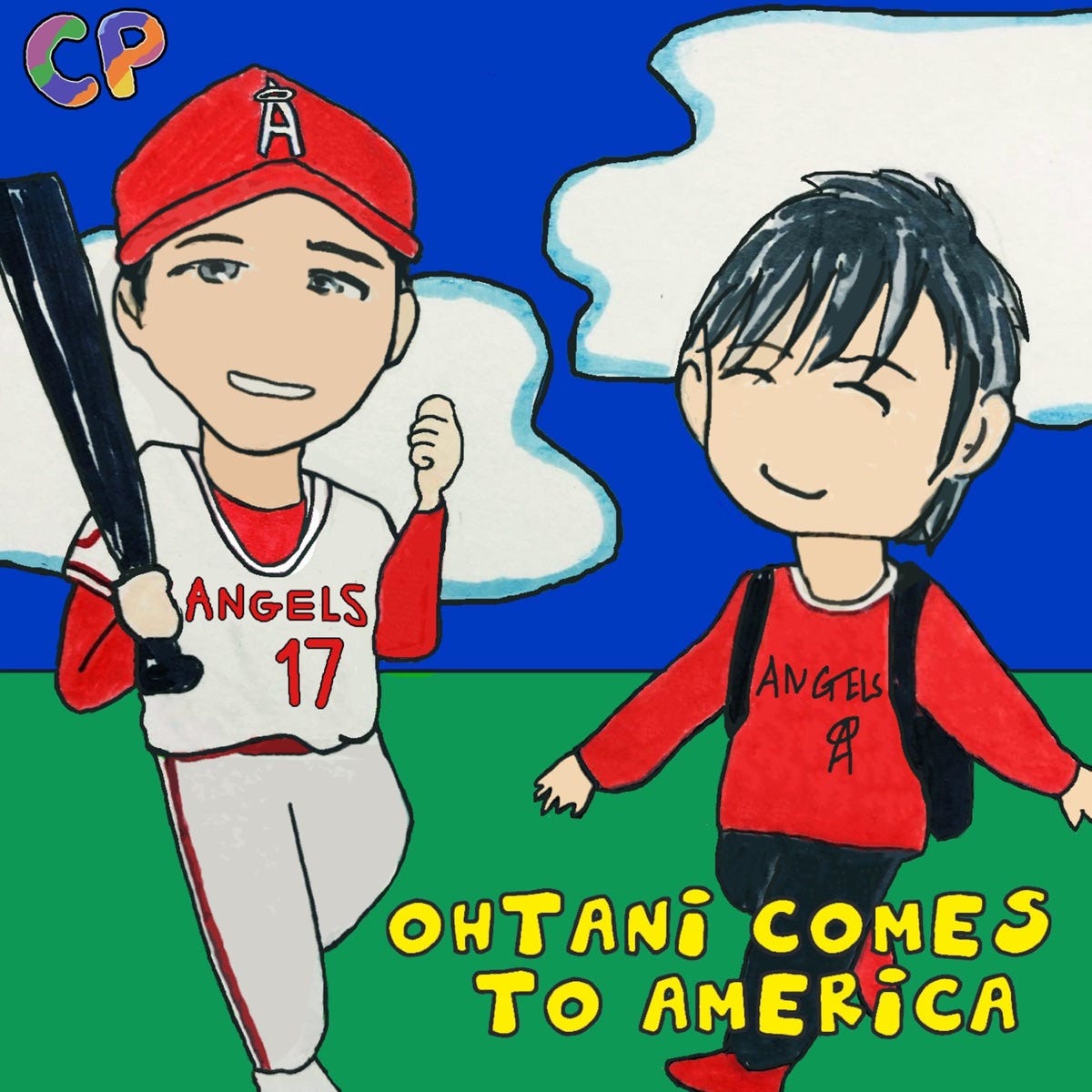
One small addendum from last newsletter – The #51 jersey that Japan held up after winning was not for Ichiro (as we had noted in a photo caption). Instead, it was for Seiya Suzuki, who actually also wears that number for the national team. As we had written in our preview before the tournament, Seiya had gotten injured and was unfortunately unable to play. Either way, it was a beautiful gesture. 🥹
In what’s becoming a regular note: Ohtani passed 5 million followers on Instagram now, after 4 million in our last email update. 👤
Shoutout to the best Ohtani stan account, @shoheisaveus on Twitter, for always being a great resource and posting clips and information. 🙏🏼
Thank you to 冷し中華 (hiyachu) - @hiyashichuka17 for drawing our email banner design and sign-up page illustration. 🎨
Let’s go Ohtani, you won the WBC MVP so now it’s time to get MLB MVP #2!




